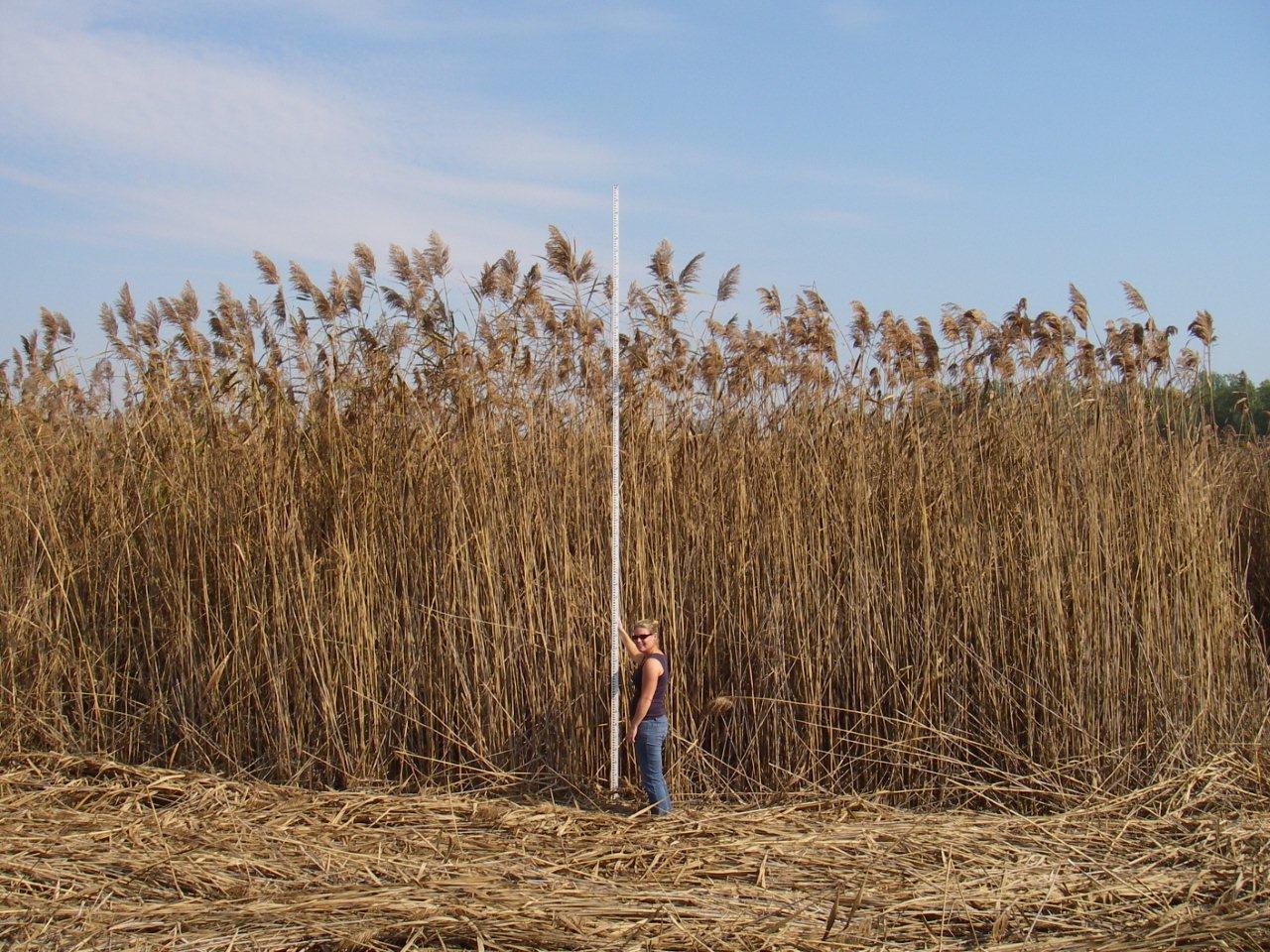Invasive plants are an immediate and growing threat to Ontario’s biodiversity, economy and society. They spread aggressively, choking out native vegetation, threatening our natural areas, and the species that depend on them. They can also degrade agricultural lands, and impact forest regeneration, costing Ontarians millions of dollars annually in control costs and lost productivity.
Invasive Phragmites or European Common Reed (Phragmites australis subsp. australis) has been described as Canada’s “worst” invasive plant. It is a tall perennial grass that is destroying coastal wetlands and beaches in Ontario. It spreads rapidly and creates dense monoculture stands, which reduce biodiversity and destroy habitat for other species, including Species at Risk. Dense stands of invasive Phragmites, can reach heights of up to 5 m, and can become impenetrable barriers to birds, amphibians and reptiles – as well as to people impeding access to our beaches and shorelines.
Invasive Phragmites has been rapidly expanding its range in Great Lakes’ coastal wetlands over the past several decades. Its spread is linked to a number of factors, including water level alterations, habitat disturbances, and pathways such as road-side ditches, agricultural drains and occasional uses in ornamental landscaping that can facilitate movement inland.
Numerous groups across the province are currently grappling with the spread of invasive Phragmites – including all levels of government, environmental groups, hunting and angling groups, and landowners. These efforts include control and management, and outreach to prevent spread to new areas. More information about these activities in Ontario can be found at the Ontario Invasive Plant Council’s Ontario Phragmites Working Group’s website at http://www.opwg.ca/. To learn more about how to control invasive Phragmites, check out the Ontario Ministry of Natural Resources and Forestry’s Best Management Practices at http://www.ontario.ca/document/invasive-phragmites-best-management-practices. There is a native subspecies of Phragmites (Phragmites australis subsp. americanus) that looks very similar to its invasive European cousin, but does not cause the same problems for biodiversity. Care should be taken to confirm the identity of invasive Phragmites before undertaking control.
Figure 1. Invasive Phragmites stand with plants taller than 5 m (credit: Janice Gilbert, OMNR).

